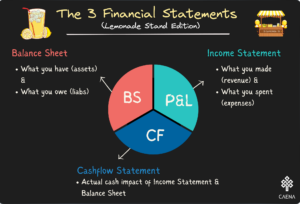Building a startup from scratch means getting your hands dirty and being involved in every aspect of business, including Marketing. But what if you have no expertise yourself and can’t afford to hire a marketer yet?
You’re an early-stage founder, determined to set your idea into reality. There are so many things that need to be done. Building the product is probably top of your mind. The thing, however, is this; you can create the best product in the world, but if no one knows about it, then it won’t really matter. It’s through marketing you can reach your target audience, validate your idea and – if your product meets a need in the market – get traction.
So where do you even start, if you have no in-house expertise? I’d say start with taking a balanced approach. During my time in the world of startups, I’ve come across startups that focus too much on research and collecting data – and getting nowhere in terms of execution. On the other side of the spectrum are the startups that base everything on gut feeling. I believe there should be a middle way; a combination of experimentation and smart strategy – followed by focused execution.
Everyone who’s done marketing for an early-stage startup knows this means a lot of experimentation (i.e. trying and failing). That’s just how it is. When you start out, you don’t yet have a deep understanding of your target audience, or what messaging that resonates. So there will be assumptions and guesswork. That said, it doesn’t mean you can’t have a strategic approach to your early marketing efforts. Here are 5 considerations to have in mind when starting out:
- Have a plan and strategy – but don’t spend too much time on the details
Most likely, you will need to overhaul it at some point. The most important is that you have an agreement with your team what your overreaching, long-term marketing strategy is. Where do you want to go? What is your value proposition? Who is your closest competitors? What is your marketing goals and how will these help you achieve your overall business goals? Set our clear KPIs and Metrics.As for your marketing plan, this is the tactics you will use to reach your goals. Synthesise it using the One-Page Marketing Plan – this simple template gives you flexibility to easily iterate it as you go along.
Your marketing plan will tie into your Go-to-Market Strategy, and set out how you’ll use marketing to launch.
- Set up your online presence; tools & channels
* Website: Regardless of what kind of business you are starting, you can’t do without a website these days. WordPress, Wix, Squarespace. The options are many, and which to choose depends on your budget, skillset and preference.* Social Media Channels: Which channels will you use to promote your product and distribute your content? You certainly don’t have to be present on every social media channel. Start out with the channels where you think your audience ‘exist’.
* SEO: To make sure people will discover you organically, you should start thinking about Search Engine Optimisation right away. Use free tools such as NeilPatel.com and Google Keyword Planner to pick the keywords that are most relevant to your business, and use them when drafting content. A good SEO software tool for your website should also be in place, to help you optimise your website (both technically and content-wise).
* Other marketing tools: Are you planning to run pay-per-click ads? (Google Ads). If so, it is smart to start early, as it might take up to 3 months before you see results. You should also to set up an email marketing tool, such as MailChimp, so you can start gathering a lead database and send out marketing emails.
- Start collecting data from Day 1
As soon as your website and social media channels are ready, start tracking and collecting data. Set up Google Analytics, and conversion-tracking for your chosen channels. Make sure it is working properly before you start experimenting, so you can gather insights and draw conclusions from the data later on. Use industry benchmark for important metrics such as Customer Acquisition Cost (CAC) and Click-through-Rate (CTR), and compare with your own results. - Experiment – and don’t be afraid to be creative!
You won’t really know what works best for you and your startup before you try. Don’t be afraid of failing (everyone does, including seasoned marketer). For example; we started out running paid campaigns on all channels, but quickly realised that while Facebook did generate traffic, it wasn’t relevant traffic (indicated by a very high bounce rate). Money out of the window, you say? No, because we learnt from it.Generating your first 100 ‘wait-listers’ or leads can be a challenge when you have no brand recognition and are operating with a low budget. Yet, people might need to be incentivised to sign up to try your product. ViralLoops is an affordable referral/viral marketing tool, which utilise WoM and gamification. Combine this tool with other social media channels; for example do a Instagram competition – the more people refer to the waitlist, the more their chances to win the prize increase. The opportunities are endless – be creative!
- At last… Find the right balance between paid and inbound marketing tactics
If you’re pre-seed, it’s unlikely that your marketing budget is massive. Social media campaigns and Google Ads can be highly efficient lead generation tools if you use them correctly, and I’d recommend to do some campaigns from the very start to kick-start your marketing journey and to get your first leads. That said, these tools can be expensive.
On the other hand, content creation and SEO is for free. But these efforts takes time, and you won’t get immediate results. However, if you start early you will at some point hopefully be able to generate organic traffic too. Write blog posts about things your audience care about, answer questions they ask (Answerthepublic.com is a great tool for content ideas). Over time, ideally, inbound tactics will start generating a bigger and bigger chunk of your leads.
If there is one more thing to remember if you are early-stage it is that lead generation and getting your first paying customers isn’t everything. In the start, feedback is the most important. This is not only giving you a chance to improve and iterate your idea/product, but also feeds into your value proposition and overall marketing communications.
Best of luck!





